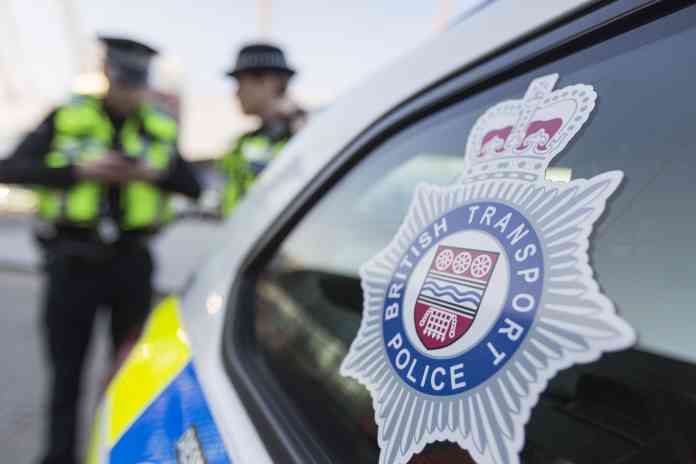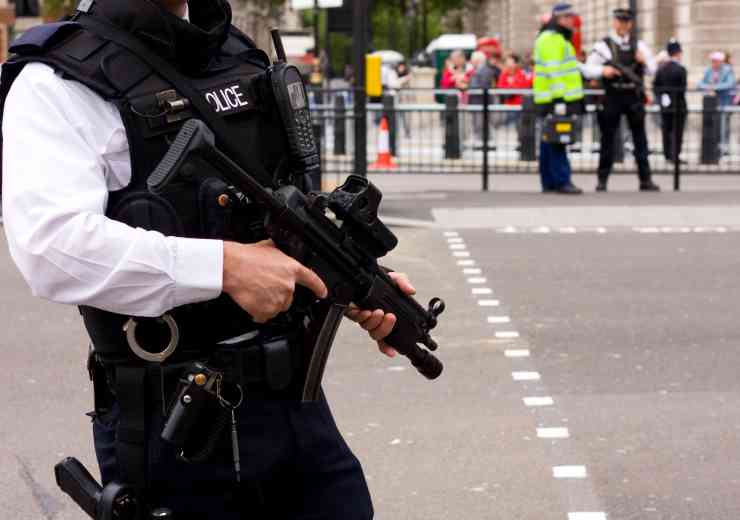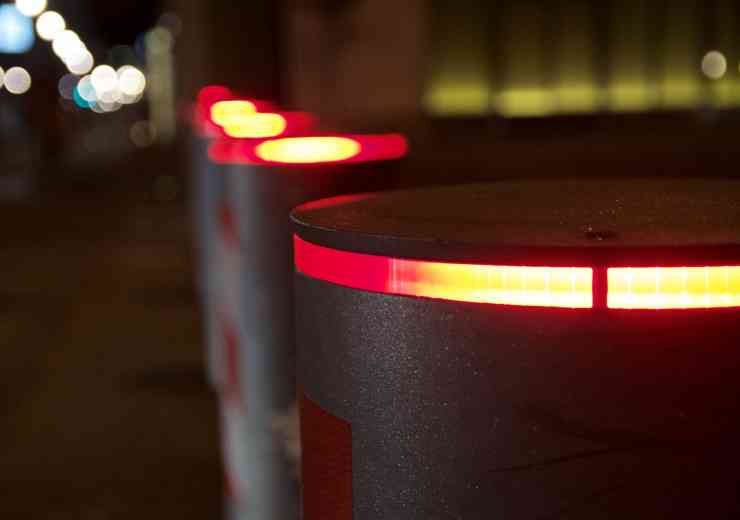
Collaboration key to keeping the UK safe
This year’s Emergency Services Show returns to Hall 5 at the NEC, Birmingham from 20-21 September with a strong focus on learning from past incidents and collaborating to protect the public and save lives. Counter Terror Business looks ahead to the event
Attracting over 6,500 visitors and 400 exhibitors, The Emergency Services Show provides a unique opportunity to network and exchange ideas across the resilience, emergency planning and emergency services community, share best practice as well as to see and handle the latest technology and equipment.
As recent terrorist incidents in the UK have demonstrated, collaboration is key to co-ordinating effective response and recovery. Luana Avagliano, head of Resilience Direct, UK Cabinet Office, who will be presenting a seminar on the subject at The Emergency Services Show, says that such events ‘highlight the importance of collaboration, partnership working and using digital tools to be able to respond quickly’. Resilience Direct is a key partner of the show, along with JESIP and the National Operational Guidance Programme.
Recent terrorist incidents
Terrorism is one of the key topics in the Lessons Learnt Theatre, sponsored by UCLan PROTECT, where emergency services and partner agencies will share their experiences of responding to real incidents. For example, North West Ambulance Service will present a session on the Manchester Arena terrorist incident which it attended. Sir Keith Porter, professor of Clinical Traumatology at the University of Birmingham, will speak about the role of citizenAID™ in the light of recent terrorist attacks in London (Westminster, London Bridge and Finsbury Park Mosque). When there is a shooting, stabbing or bomb explosion the initial priority is public safety. This can delay the time before the emergency services are able to reach the injured. citizenAID™ enables the general public to be effective in these situations before the emergency services are available to provide professional medical support. It is designed to guide the public to react safely, to pass effective messages to the emergency services, to prioritise the injured and to give life-saving first aid. Visitors can also find out more on the citizenAID™ stand in The Collaboration Zone at the show.
CBRN experts will also be speaking in the Lessons Learnt seminar theatre. Mark Godsman, part of the Fire and Rescue Service Team at the National CBRN Centre, will present a session on CBRN Initial Operational Response. In the early stages of a suspected CBRN incident, the first 15 minutes are vital for reducing harm to casualties. He will explain what this means for control rooms and frontline responders. Chief Inspector Richard Butterworth, deputy head of the National CBRN Centre, will then talk about the multi-agency response, examining how this looks to responders on the ground and what specialist resources can be expected.
Simon Lewis, head of Crisis Response for British Red Cross, will present a session on the charity’s role in emergency response to crises such as the Manchester and London terror attacks. He will explain more about the British Red Cross’ national community reserve volunteers project, which will help build stronger communities by recruiting a practical taskforce of thousands.
Lewis said: “When large emergencies happen there is an outpouring of support from local people. As we’ve seen from Manchester, London and the Grenfell Tower fire, members of the community play a vital part in the response. Harnessing these valuable voluntary acts and integrating them with the official response has long posed a challenge to the emergency planning and response sector. The project aims to enhance community resilience by providing local people with a focused and practical way to help others, particularly during long-running major incidents.”
The College of Paramedics will once again deliver a programme of free 30 minute CPD workshops which cover trauma, airway management, basic and advanced life support as well as a reflective account on the past London bombings.
Disrupting, deterring and detecting terrorism on the railway
In the networking hub of the show - The Collaboration Zone - over 80 voluntary groups, charities and NGOs will be sharing details of the support they offer, while members of other blue lights services will be available to discuss co-response, current trends and share ideas. The Special Response Unit of the British Transport Police (BTP) will be on hand at the show to demonstrate some of the equipment and techniques it uses to help BTP deal with potential threats to the rail network. The unit of highly skilled officers responds to reports of suspicious or unusual items on the railway, whilst keeping stations open and trains running to minimise disruption to passengers. They make crucial decisions under immense pressure every day and will be offering an insight into how they do this.
BTP will be providing information about other initiatives it uses to detect, deter and disrupt a wide range of crime on the railway, including terrorism, and how the force encourages members of the public to report suspicious behaviour or activity on the network. There will also be a chance to meet the four-legged crime fighters that also help to keep the railway safe and secure.
Mitigating CBRN Risk
On the CBRN Centre stand visitors can be updated on the UK’s multi-agency approach to CBRN threat.
Chief Inspector Richard Butterworth explains: “Our tri-service team, with partner agencies, continually reviews the CBRN threat and mitigates identified vulnerabilities. It also equips UK emergency responders with the knowledge and capability to respond in a proportionate, agile and effective manner to a CBRN incident. The CBRN threat has not changed, but we must be cognisant of our increasingly connected world, where information and expertise that has historically been hard to access is now instantly available at the click of a button. This, combined with the fast flow of people and goods, is a challenge for us in mitigating the CBRN risk.
“It is essential that the emergency services and its partners continue to prepare through training and exercising a multi-agency response. However, we must also be mindful of the opportunities developing for improving our capability. Considering and planning how the future emergency response will look is vital. To this end, we are actively searching for innovative technologies and approaches that will further protect and save lives.”
Mark Williams, CEO of the Police Firearms Officer Association (PFOA) agrees that technology and training are key: “It is important that we keep up to date with the latest technology to ensure we are at the cutting edge to give officers and forces the best tools to fight crime and the threat of terrorism, and at the same time ensuring that the training is appropriate and the best it can be to prepare officers to be able to best protect themselves and the public.”
Visitors to the PFOA stand can also find out more about its Welfare Support Programme which includes a 24/7 support line. The PFOA delivers Post Incident Management training to UK police forces and agencies, as well as government and organisations that may be involved in such processes.
Living with PTSD
A new seminar theatre dedicated to the health and well-being of emergency services personnel will cover issues such as mental health and health and safety. Visitors will hear about strategies for supporting crews post-incident and learn more about the blue light well-being framework for all emergency services being developed by the College of Policing in conjunction with Public Health England. Personal stories will be shared by a serving police officer who suffered a nervous breakdown and a paramedic diagnosed with Post Traumatic Stress Disorder (PTSD) who has set up the charity Our Blue Light. Simon Durance and Gary Hayes, co-founders of the charity PTSD999, will present a session on living with PTSD.
The Police Federation of England and Wales will be sharing details of its Protect the Protectors campaign. The Police Federation is pressing for better training and access to equipment, a wider roll-out of protection measures such as taser, body worn video and spit guards, more accurate data on police assaults and improved welfare support.
Showcase of solutions providers
With over 400 exhibiting companies and organisations, including over 50 new names, the impressive indoor and outdoor exhibition is a one-stop shop for sourcing all the latest services and equipment. Exhibiting companies include leading names in first response, communications, IT, protective clothing and uniforms, body-worn video, medical supplies, vehicles and fleet, vehicle equipment, drones, outsourcing, training, community safety and station facilities.
Excelerate, for example, will be demonstrating a range of surveillance and communications equipment on its stand, including the Sherpa portable camera that can climb lamp-posts, the Proclux long range camera which can be used in harsh and challenging environments and a Command Pod deployable resilient data network to facilitate live camera and data streams within the incident ground.
Suppliers of medical products include Water-Jel International, which will be exhibiting its burn-treatment dressings, and Celox, which will showcase Celox Rapid its fastest haemostatic gauze that stops life-threatening bleeding with only 60 seconds compression. Fenton Pharmaceuticals will be showcasing a range of pre-hospital trauma products including tourniquets.
Andrew Saunders, the company’s business development manager, said: “With the increase of terrorist incidents in the UK the inescapable fact is there needs to be an increased awareness of trauma first aid by the general public. Pre-hospital trauma equipment is continually evolving and we are at the forefront of that evolution but we must not forget the solid basics of immediate first aid in the event of a terrorist attack: Stop the bleed, keep them breathing.”
digital issue



















